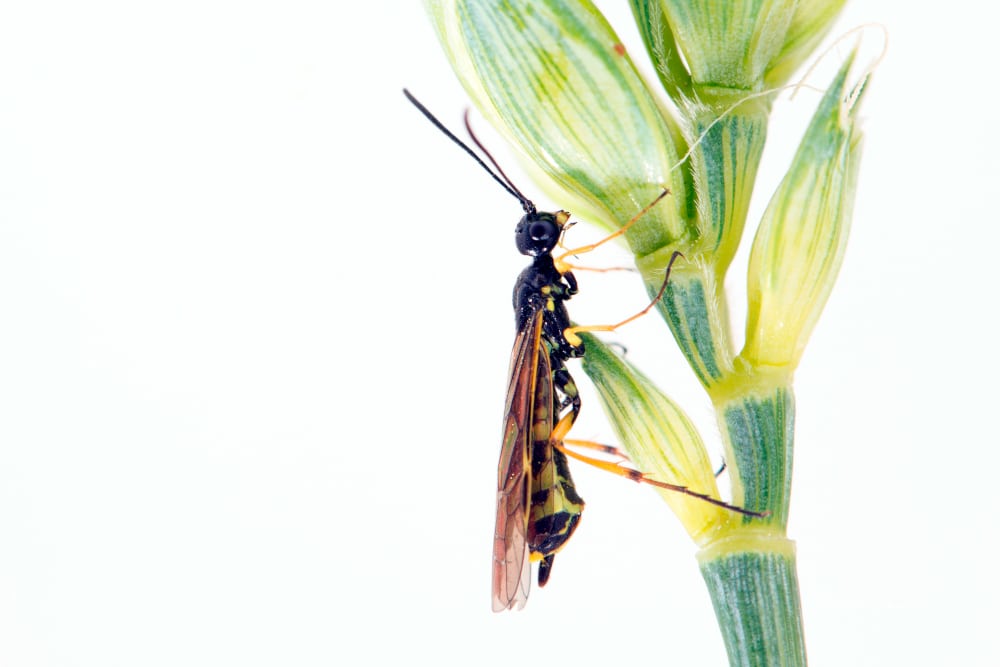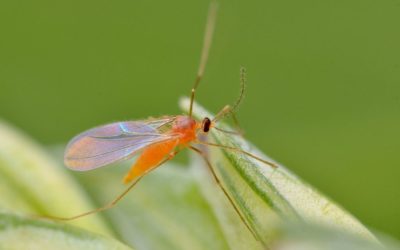Above feature photo: A pea leaf weevil. (Shelley Barkley)
Alberta farmers only need to look at the history of their fields and weather from years past to predict what pests and crop diseases they’ll face this year. Part 1 of a four-part feature.
Farmers in Alberta can expect history to repeat itself in 2024. To predict what pests and diseases may impact crops during the 2024 growing season, they should look at the history of their fields and past weather conditions to know what to expect.
“(They need) to be out in the field scouting, knowing what’s there and to be keeping track of what you saw in 2023,” Shelley Barkley, insect survey technologist with Alberta Agriculture and Irrigation, says in a phone interview. “It’s knowing what you have or what you’ve dealt with in 2023 so that you can be prepared to be out scouting and looking for them in 2024.”
However, nothing is guaranteed and depending on the weather during the growing season, it could impact the pests and diseases that affect Alberta crops.
“The weather can change and so that can push severity a little higher or a little lower, depending on whether we get drought conditions or whether we get a lot of rainfall,” Mike Harding, plant pathologist with Alberta Agriculture and Irrigation, explains in a phone interview.
Along with historical pests and diseases, there are some newer ones that farmers should be on the lookout for.
Insects on the Rise with Hot, Dry Weather
Following a dry, hot 2023 growing season and an unseasonably warm fall, grasshoppers are on the menu for 2024, Barkley says.
“Grasshoppers were two weeks ahead of what they normally are in 2023. I saw grasshoppers mating July 2, they were laying eggs for a long time this summer. Those eggs that were laid had a long time to mature in the ground because of our beautiful fall to mature in the ground. So, they are probably pushing some of them 80 per cent maturity,” Barkley explains.
Grasshoppers should be expected in southern regions that have experienced an influx in recent years, and Barkley cautions she has heard reports from agronomists as far up as the Vermilion and Lloydminster regions about grasshopper infestations.
Wheat stem sawflies will be another pest to look out for in 2024. They favour hotter, drier conditions as well, and have flourished in recent years. Same as with grasshoppers, as there have been reports of them moving farther north with a farmer, telling Barkley they had found them in fields in the Consort, Alta. area.
Pea leaf weevil levels are on the rise with the corridor between Edmonton east along Highway 16 to the Saskatchewan border seeing more infestations.
“I would expect that (farmers) are going to be seeing that kind of damage showing up in their fields. And of course, it’s not the damage on the top of the plant that you’re at all worried about. It’s what’s happening under the ground when they’re feeding on the nodules,” Barkley states.
Cutworms caused issues during spring 2023 and Barkley expects that could be the case again this year. She recommends farmers to scout seedling crops in late May through to July for cutworms.







